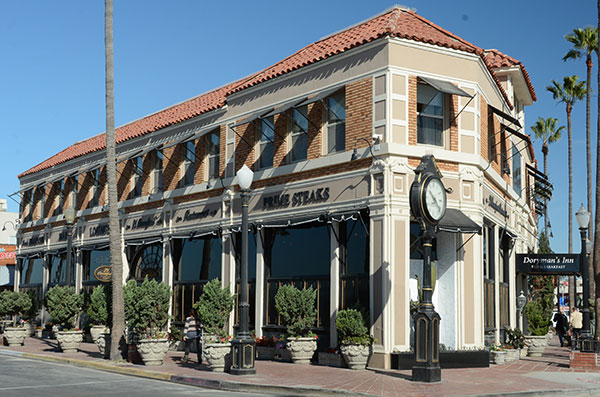Newport Beach, population 85,000, is an affluent city on the Pacific Coast in Orange County, California, roughly 50 miles southeast of downtown Los Angeles. Newport Beach shares a border with the City of Irvine, which has had a TDR program in effect for decades. The city now has a TDR program of its own aimed at incentivizing developers to provide various community benefits including reducing vehicle trips, improving development scale and character, preserving historic and natural resources and contributing open space, parking, public view corridors and other amenities. The transfer provisions apply within all zoning districts.

Historic structures, like the 1926 Doryman’s Inn, qualify as sending sites under Newport Beach’s TDR program along with transfers that provide several other types of community benefits.
To approve a TDR application, the City Council must find that the proposed transfer would produce one or more of the benefits listed above. The zoning code Chapter 20.58 lists four additional requirements in Section 20.58.030.
A) The donor and receiver sites must be located within the same Statistical Area as found in the Land Use Element of the General Plan.
B) “The total development intensity allowed to be transferred into a particular zoning district from another district shall not exceed the total development intensity allowed for that zoning district.”
C) “The maximum gross floor area allowed on a donor site shall be reduced by the amount of the transfer of development intensity to the receiver site.”
D) Transfers of residential development rights must be on a unit for unit basis.
Section 20.58.040 establishes the following procedures.
A) An application to transfer development rights must identify the sending and receiving sites as well as the amount of development potential (floor area, hotel rooms, theater seats) to be transferred. Conversions from one category of entitlement to another are permitted but applicants must identify the amount of development potential on each site before and after the transfer.
B) PM peak hour trip generation with and without the proposed transfer must be analyzed by a traffic engineer.
C) Where necessary, additional traffic analysis must determine whether the proposed transfer would worsen congestion at any primary intersection already experiencing unsatisfactory levels of service.
D) When the transfer involves conversions of development potential, the applicant must calculate the floor area with and without the transfer.
E) In addition to finding that the proposed transfer produces one of the community benefits listed above, the City Council must make three addition findings.
- The proposed transfer would not generate adverse traffic impacts or result in “…greater intensity than development allowed without the transfer and the proposed uses would not lend themselves to conversion to higher traffic generating uses.”
- The proposed changes to the receiving site will be compatible in scale and character with surrounding development.
- The receiving site can accommodate the development proposed by the transfer in terms of circulation, protection of significant public views, open space and site characteristics including slopes, submerged areas and sensitive resources.
The transfer provisions have been used on a number of occasions.
